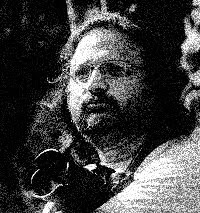I have always been surrounded by photographers in my family and interest in photography was natural. Having said that about 4 years back I was hunting for a used macro lens and bought a used Sigma 180mm from a friend, that lens which is my prized possession even today changed the way I shoot macro pictures and also made me to look at things differently. This series of compilation is a brief record of what I have learnt with respect to macro photography and is an effort to record those thoughts and experiences.
Macro photography is photography of subjects that are very “small”. The primary goal is to show the details in the subject as sharp as possible and then add other parameters like lighting, composition to make viewing the picture a pleasurable experience.
I will cover few things about the equipment, In this blog.
To do macro photography, you need the following:
1. Bellows or extension rings that fit your particular camera and lens mount or filters(close up lenses) or reversal ring or even better a macro lens.
2. Sturdy tripod
3. Cable Release / Remote
4. Optional flash / Reflector.
5. Lots of patience.
6. Eye for the subject.
The bellows / extension rings(tubes) effectively lengthen the focal length behind the lens (the effective focal length) while the distance of the lens to the object is drastically reduced. Even though this is effective it can introduce some distortions at the edges so using a small aperture helps here to reduce these distortions.
Reversing lens is another technique and it was one of the techniques that I have tried during my initiation days. This is the cheapest alternative but since you are using the lens in a manner that it wasn't designed for, you can expect bad lens errors to show up! And off course some of today’s cameras will not work with this technique.
Close-up lenses are simply magnifying glasses that can be screwed onto the front of a lens to increase object size. These type lenses shorten the minimum focus distance for the lens in use.
Tripod and cable release/ remote are optional, but I suggest using this because you will be photographing small objects at some magnification, any small vibrations of the camera will most certainly blur the exposure.
Flash / reflectors can be used depending on the lighting condition to highlight the details in the shadows and if used effectively will make the picture stand out.
to be continued....
Goutham R
My Pictures at Trek Nature
See more photos by goutham_ramesh on TrekNature
Friday, March 13, 2009
Subscribe to:
Post Comments (Atom)


No comments:
Post a Comment